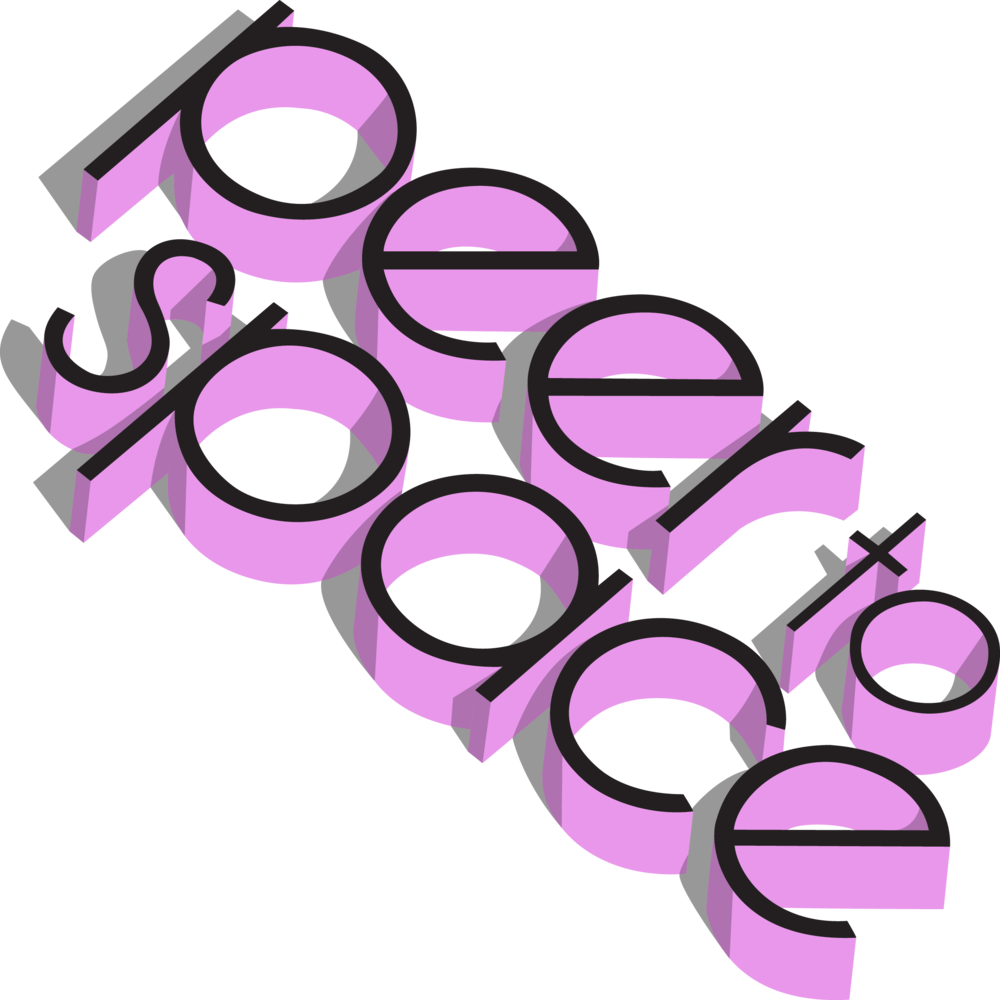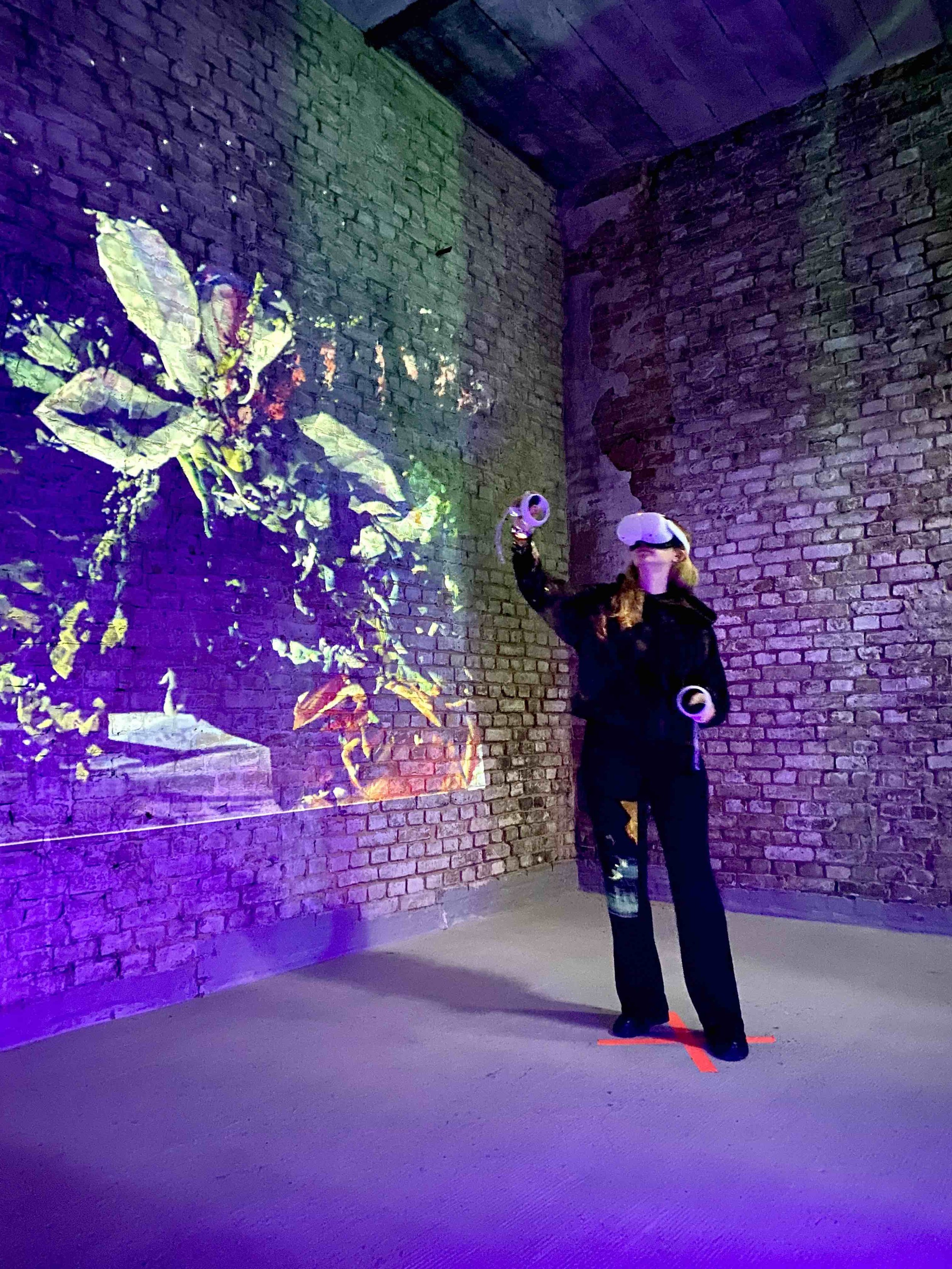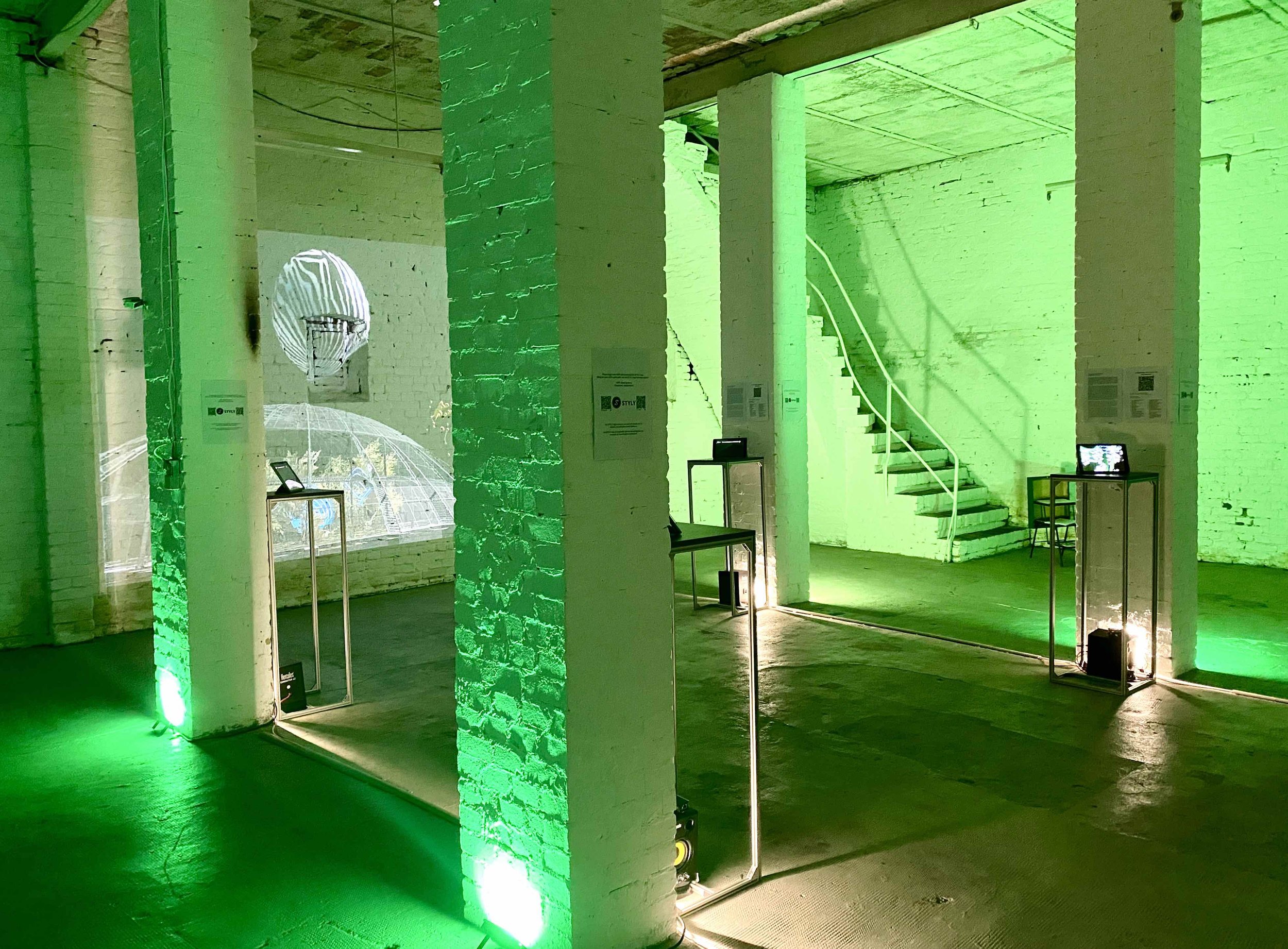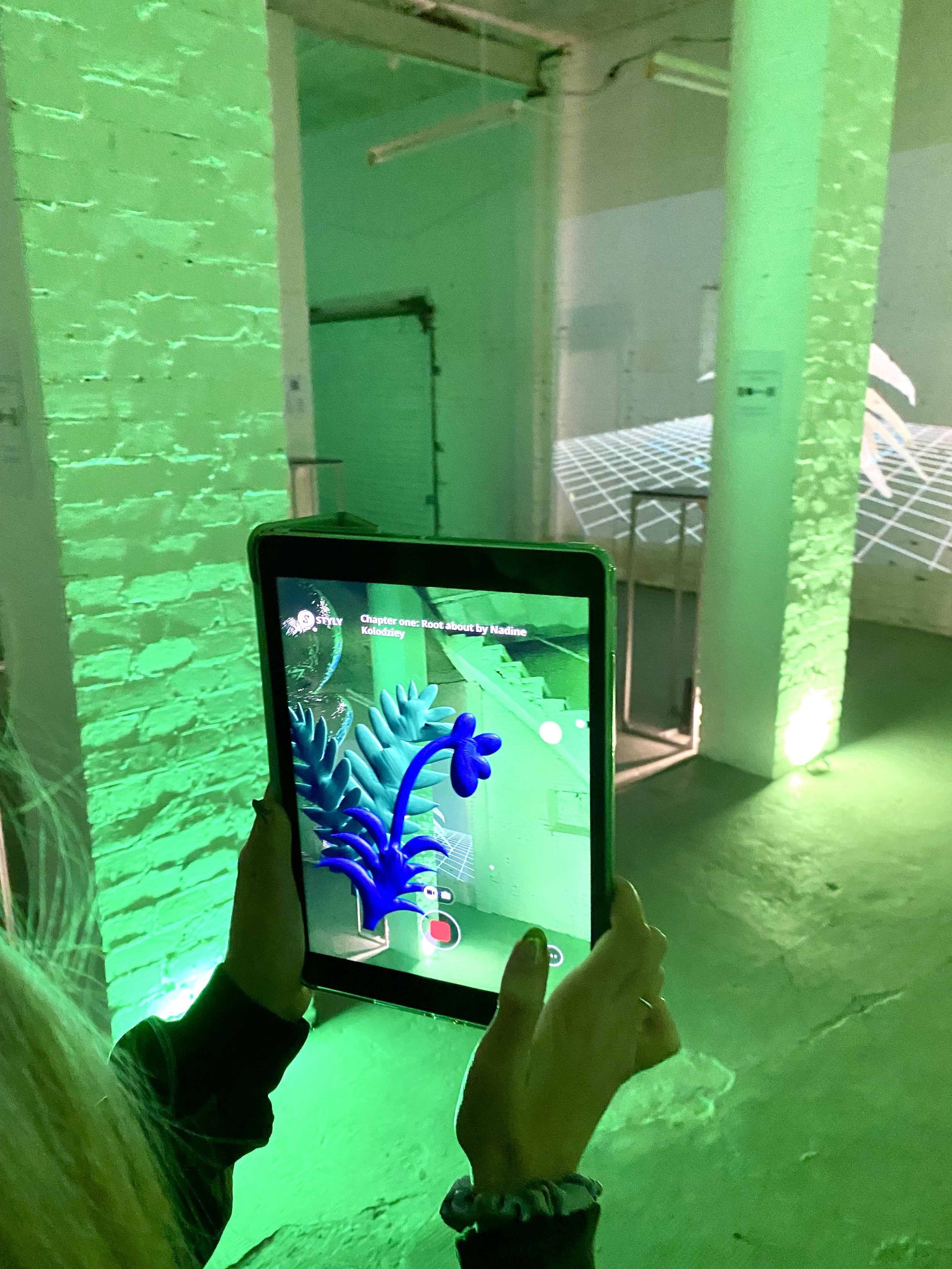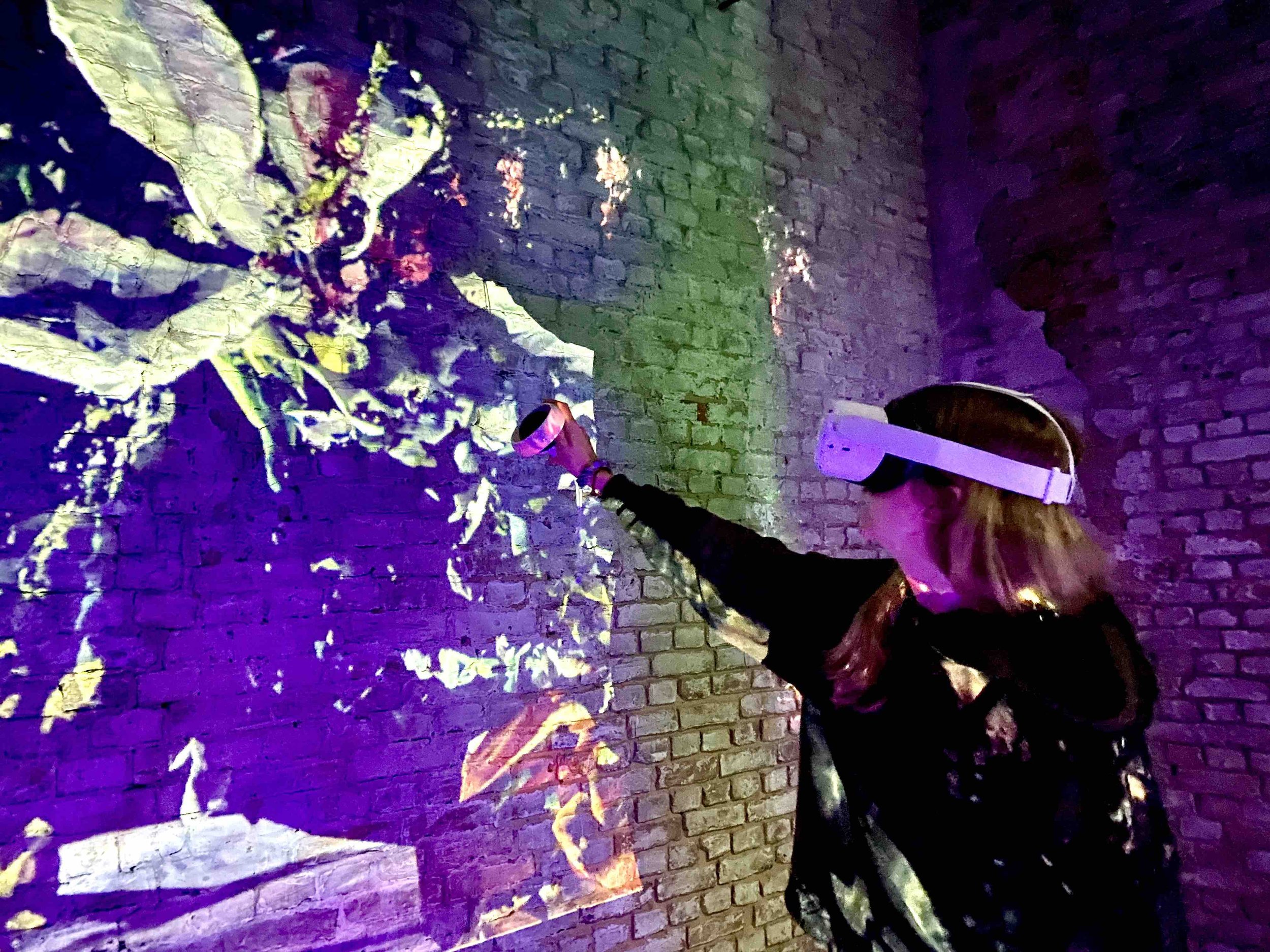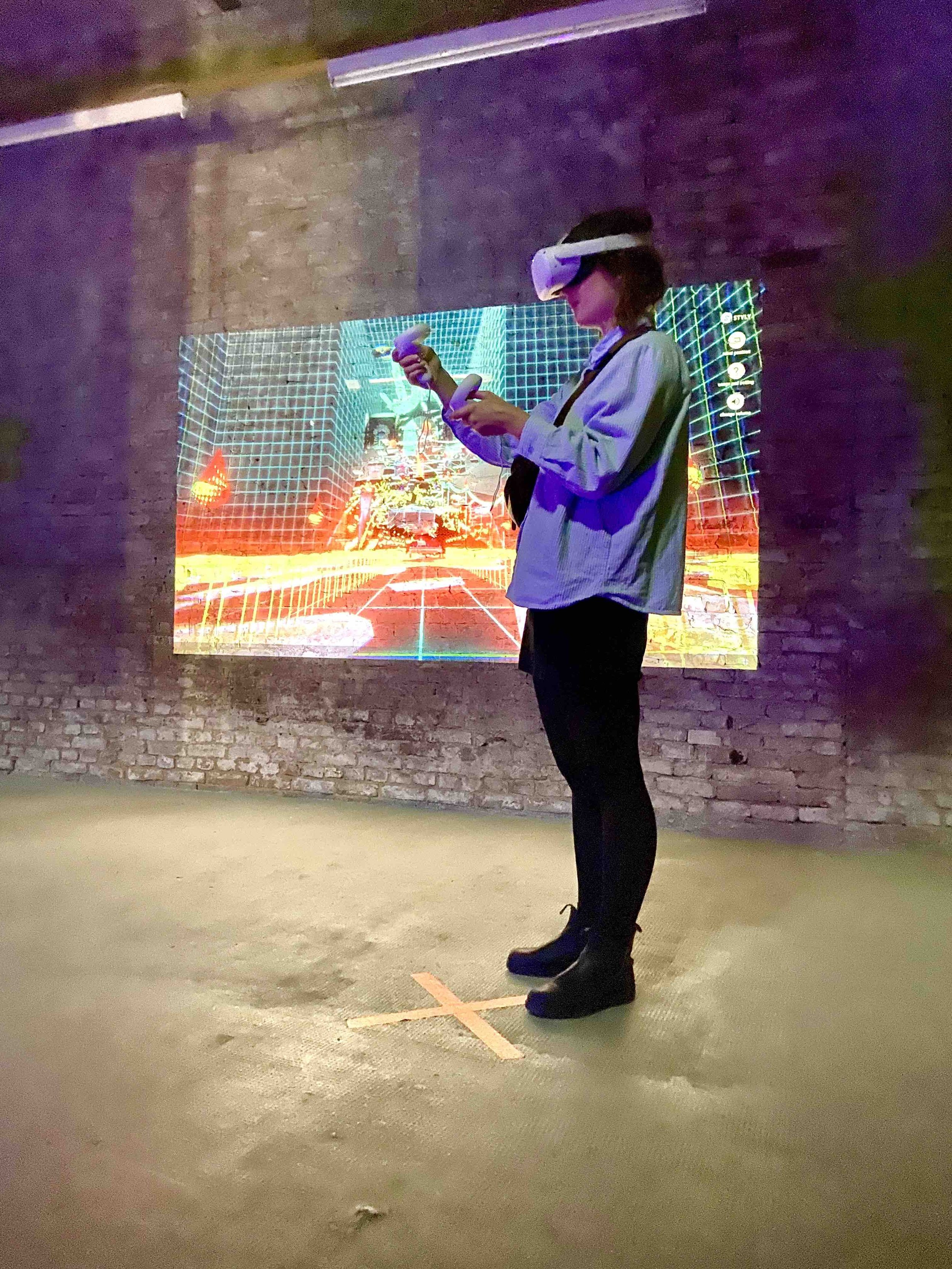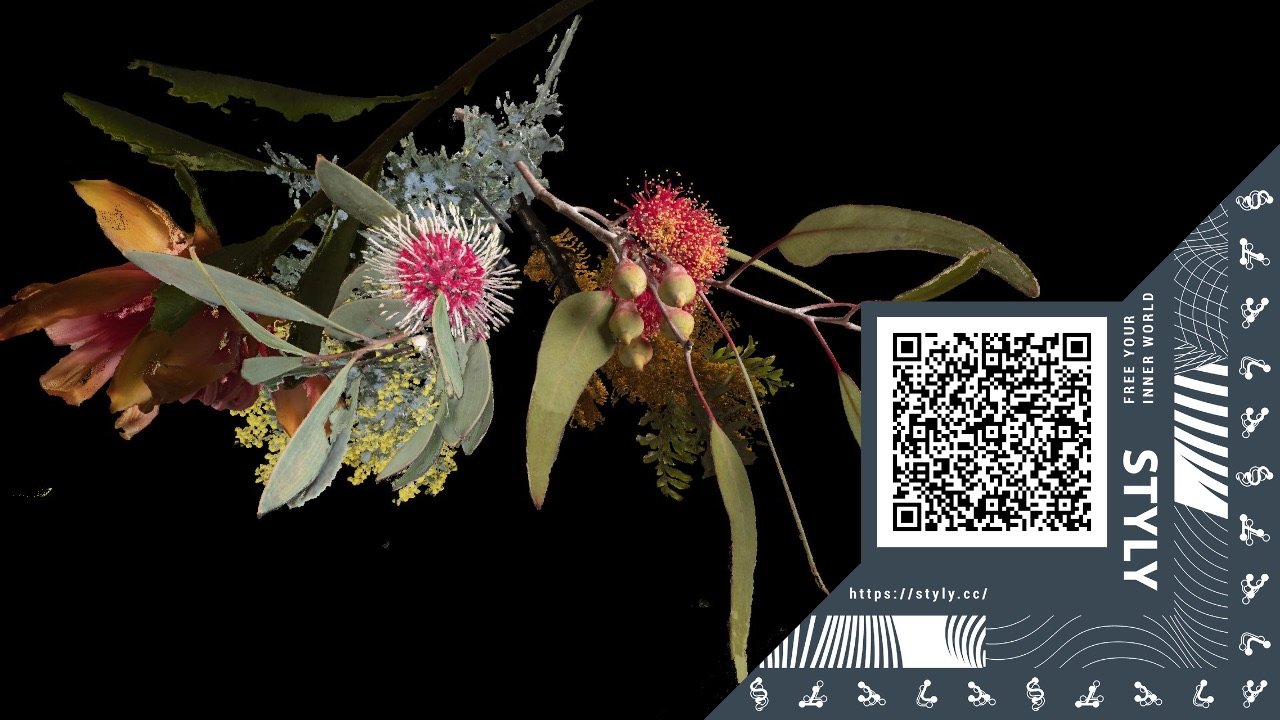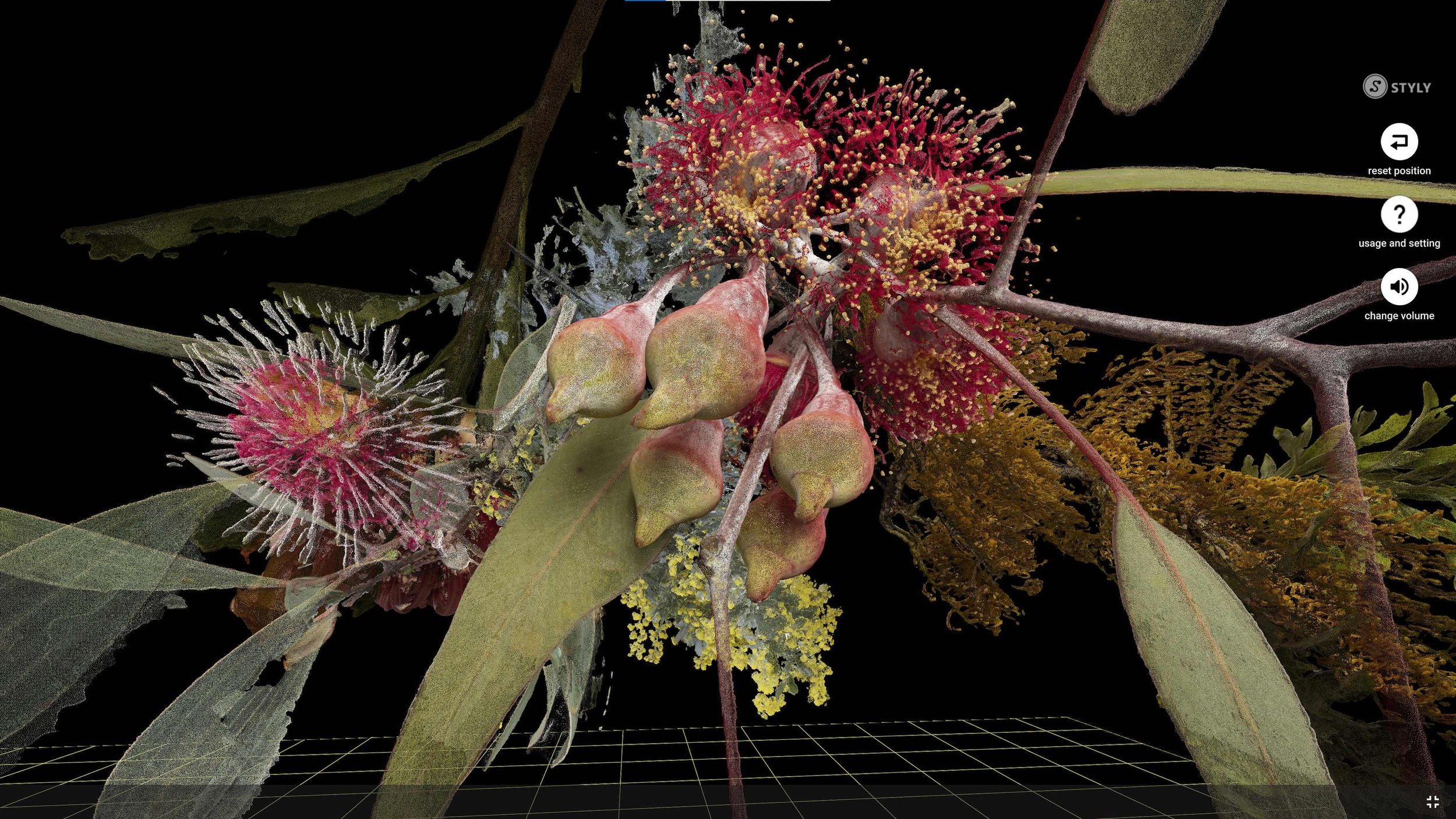SEED SYSTEMS - Speculative Ecologies in XR Art Today
Initiated by STYLY
Curated by Miriam Arbus (Sky Fine Foods) and Peggy Schoenegge (peer to space)
Artists: Alison Bennett (AUS) | Nicholas Delap (UK) | Matthew D. Gantt (US) | Mohsen Hazrati (IRN/DE) | Nadine Kolodziey (DE) | Lauren Moffatt (AUS/DE)
In cooperation with SOMA Berlin and Radiance VR
At: SOMA 300 Berlin, Eylauer Strasse 9, 10965 Berlin (DE) and online via STYLY
Duration: September 10 - 30, 2022
In the age of the extractivist Anthropocene, nature is dominated by human impact. We built capitalistic structures by extracting and selling natural resources for our own benefit. The dramatic increase in CO2 emissions since the Industrial Revolution and the devastating effects of human activities on the global environment have profoundly changed the Earth system. Escalating climate disasters like wildfires, floodings or frost call for a change in overall behavior. The resulting environmental precarity underlines the need for new, innovative visions for the future.
Following the idea of neo-ecologies, virtual technologies provoke new states of being, illustrating concepts for our future. Reformulating approaches to environmental questions, interactive Expanded Realities (XR) immerse us into speculative ecosystems. Divergent futures emerge as a digital garden, where growth is as inevitable as decay. The tensions of human impact are deeply rooted within the exploration of possibilities. In this discourse, humans’ inevitable depletion of resources is the critical object of consideration.
Grappling with these topics, the XR art exhibition Seed Systems emerges as a collaborative cultivation emerges as. Six international artists use augmented and virtual realities to explore speculative approaches to future human-nature relationships, forming a spatial and sonic occurrence of growth and foliage. They unite their expertise in virtual world-building and plant knowledge, shaping alternative ecologies and biologies. The artworks create networks and systems of seeds as future concepts for environments. Activated in XR through computer-generated images (CGI), animation, point clouds and interactions, the digital biosphere – nourished by visions – grows as a space for meeting and reflection. In this speculative approach, new possibilities for action, care-taking, and reciprocity flourish, visualizing a necessary change in perspective.
Alison Bennett considers Australian native flowers as celestial encounters by exploring vegetal thinking, digital gardening and post-human neuroqueer phenomenology through today’s possibilities of expanded photography. Nicholas Delap examines histories of folklore and the nettle plant – a mysterious and overlooked plant whose medicinal qualities make it one of the most potent and widely available healing tools. Matthew D. Gantt interconnects responsive sound elements with the visual, engaging with Brian Eno’s notion of generative electronic music as bottom-up gardening – emergent structures flourish with no predicated finale. Mohsen Hazrati creates a virtual bioluminescence with a metaphorical approach to understanding wine as an alternative source of energy, which he considers in the context of Irianian culture. Nadine Kolodziey explores how to plant something digital and intangible in a physical space, while playfully questioning future interactions within our technologized environment. Lauren Moffatt establishes cycles of flourishing and decay in nature, examining how different virtual and physical ecosystems become linked by human movement and behavior.
Inspired by gardens that carefully construct spaces of experience and interaction, the exhibition considers how new media can be used to reimagine ecological systems and facilitate mindful, inclusive futures. Planting seeds of reflection and growth raises the question of what we can do at a small scale to initiate patterns for the greater system. Should this practice be considered rebellious, productive or promising? Can this artistic activism really contribute to a positive development of our planet’s ecology? How can the influence of humankind change for the better?
Alison Bennett, Vegetal/Digital, 2022, AR experience
Alison Bennett considers Australian native flowers as celestial encounters by exploring vegetal thinking, digital gardening and post-human neuroqueer phenomenology through the possibilities of expanded photography and point-cloud renderings. The forms seemingly dissolve and reveal individual details of the plant’s structure. Doing so, the artist creates a unique aesthetic of nature and allows a different perspective on the plant, which evolves as an artifact within the interactive AR experience.
Referring to the philosophical concept of vegetal thinking, characteristics of plant behavior and the vegetal heritage of human thought are juxtaposed. Following this idea, Bennett adds the approach of digital gardening, in which seeds of thoughts are shared and cultivated in a public, online space. Understanding the web as a kind of garden, the artist changes the technological view of the virtual and generates a speculative idea of future natural spaces. Mediated through an autistic queer lens, Bennett’s work sides with the object, creating encounters that collapse the spectral, floral and machinic.
Nicholas Delap, Urtica Portal, 2022, AR experience
Nicholas Delap’s ongoing research intertwines folklore and plant symbologies and emerges as an AR experience that encourages a re-wilding of the mind. The user experiences an overlay of nettles that illuminate the exhibition space and become a pathway for detoxifying and cleansing. Directing the user’s focus to the natural environment, the artwork creates a contrast between the physical and digital spheres, pointing to the otherworldly qualities of what we perceive as wilderness.
Delap’s work examines wild spaces and the flora and fauna that thrive in the diverse range of landscapes of the British Isles. Examining the Urtica dioica, also known as the nettle, the artist explores a mysterious and overlooked plant whose medicinal qualities make it one of the most potent and widely available healing tools. With a rich magical history within the folklore of the British Isles and Northern Europe, the plant thrives in seemingly neglected spaces – the man-made and post-industrial landscapes that make up a large part of today's Britain. The nettle has many properties: it detoxifies soil, regenerates ecosystems, and allows a more diverse range of plants to grow in its wake. It heals both the human and non-human worlds. Through this work, the artist responds to post-human neo-ecologies, exploring and reflecting local and global practices relating to trees and plants.
Matthew D. Gantt, Varigate, Varigated, 2022, AR experience & sound installation
Matthew D. Gantt’s AR experience immerses the visitor into a lush and imitative vegetation contained inside of a greenhouse structure. A referential experience emerges that places an immaterial architecture into the exhibition space, creating a tension between both spheres. The experience is accompanied by electronic sounds, which change and cycle over time. Varigate, Variegated interconnects responsive sound elements with the visual, as an interactive experience, underlining the digital matter.
The artist refers to Brian Eno’s notion of generative electronic music as a bottom-up gardening - an occurrence where emergent structures are encouraged to flourish with no predicated finale. Above this, ephemeral moments emerge, resembling the growth and mutation of vegetation. In this way, the work breaks away from rigid structures and creates something unpredictable. Gantt unveils a new, virtual dimension into the physical surroundings. In traditional analogue synthesis, a digital gate signals an electrical pulse which triggers sound events within the greenhouse. In the juxtaposition of both worlds, a reference system emerges that translates the characteristics of nature into the virtual and makes them accessible.
Mohsen Hazrati, Perception of Wine, 2022, VR experience
Mohsen Hazrati creates a virtual bioluminescence with a metaphorical approach to understanding wine as an alternative source of energy, which he considers in the context of Iranian culture. References to our technologized everyday life such as computers, screens, hard drives, and geometrical formations build an abstract architecture accompanied by floral structures and text fragments. Neon lights flicker in different colors, creating an electrifying atmosphere. The user is invited to explore the virtual realm, imbued with references to classical Irianian literature.
Hazrati invites reflecting on the metaphor of wine. Not just in its functionality as a culinary drink, but also as symbolic, representing the blood of a friend or an elusive escape, among others. Wine also had a practical function in ancient Iran. The so-called Baghdad Battery is the oldest known example of a battery. It was invented around 2000 years ago in Khujut Rabu, near the ancient metropolis of Ctesiphon. Archeologists found this battery consisting of a ceramic pot, a copper tube, and an iron rod. In order to make the battery work, the pot was filled with wine, generating around 1.5-2 volts. Hazrati adapts this idea into our post-digital age, contemporary lifestyles, and his artistic production. This ancient improvised battery serves as a symbol for the many developments that followed it in science, product design and electricity, which passed through the ages to today’s WLAN, computer screens and countless digital devices.
Nadine Kolodziey, Root About, 2022, AR experience
Artist Nadine Kolodziey’s three-dimensional anthropomorphic figures appear as a floral formation in the middle of the physical space, breaking through the environment’s material conditions and extending its structure. The artist technologizes the image of nature and changes the way we experience it. The augmented plants are composed of shiny chrome-like surfaces that are beyond physical, though reminiscent of glass spheres, making the intangible forms almost fragile. They create a visceral contrast to the building that houses our exhibition space. Kolodziey invites the visitors to engage with virtual nature and explore the immaterial artwork spatially.
The artist’s depiction of a virtualized nature playfully addresses the question of future interactions with our technologized environment. At the same time exploring how to plant something digital and thus immaterial in a physical space. Through this approach, a hybrid user-experience opens up, oscillating between both realms. The digital foliage interacts with the immediate physical surroundings, illustrating a symbiotic interrelationship. Kolodziey makes clear that the communication and understanding of our environment not only takes place directly in natural space, but also with experiences of virtual landscapes. Acknowledging all that we do not know, Kolodziey broadens our understanding of reality. In this discourse-relevant approach, she shows viewers a speculative reality of nature, offering an opportunity to connect in new ways.
Lauren Moffatt, (De)Composition, 2022, VR experience
In the VR experience (De)Composition Lauren Moffatt presents a series of digital collages from the Compost series, as part of her larger Flowers for Suzanne Clair body of work. We enter a dark moonlit landscape at the scale of a tiny insect, surrounded by hybrid plants that seem to breathe and reach for us. Referencing Suzanne Clair, a secondary character in the apocalyptic fiction novel The Crystal World, written by J. G. Ballard in 1966, the artist deals with an unseen or unnoticed perspective, presenting it as a different approach for reflection. In doing so, Moffatt creates an aestheticized approach to technology.
(De)Composition explores cycles of flourishing and decay in nature and how different virtual and physical ecosystems become linked by human movement and behavior. Using photogrammetry, the artist transforms plants into 3D meshes. She virtually photographs these digital reconstructions, paints them, and projects the digitized painting back onto the 3D model, creating virtual sculptures that exude a type of organic digitality. In this context, the hybrid digital flowers take on a metaphorical function. On the one hand they are an offering of mourning for Suzanne’s missing story, the missing female voice and perspective. On the other hand, they are a tribute to the power of her imagination, which, in its absence, is infinite. In this context, technology becomes a tool of deceleration and regeneration, enabling a new, technical approach to understanding in which time we live.
ACCOMPAGNING PROGRAM
September 9, 2022, 6 - 10 pm CET: Opening
September 10, 2022 @6pm CET: Sound Performance and Artist Talk ft: Matthew D. Gantt
September 15, 2022 @6pm CET: Artist talk ft: Nadine Kolodziey
September 18, 2022 @11am CET: Virtual Artist talk ft: Alison Bennett and Nicholas Delap (online/ STYLY Session)
September 20, 2022 @6pm CET: Virtual Artist talk ft: Lauren Moffatt (online/STYLY Session)
September 22, 2022 @6pm CET: Artist talk ft: Mohsen Hazrati
September 30, 2022, 12-6 pm CET: Closing Event
